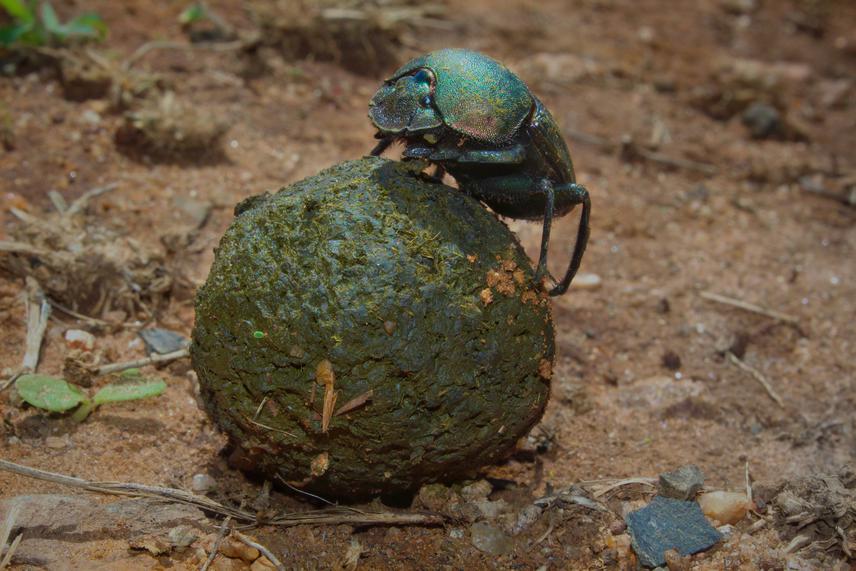Finote Gijsman
Dung beetles (Coleoptera: Scarabaeidae) are a globally distributed group of animals that provide key ecological functions. Because of their dependence on dung for food and reproduction, dung beetles are sensitive to changes in mammal assemblages; size- biased declines in mammal communities threaten their survival by reducing the dung resources available to them and precipitating parallel declines in their communities (i.e., “co-declines”). Yet, despite the documented sensitivity of dung beetles to environmental and anthropogenic disturbances, their high diversity in tropical locations, and their importance for ecosystem functioning, our understanding of their diversity, distribution, and associations with mammals remains limited, particularly in African savannas which are subject to major anthropogenic disturbances and support a wide suite of threatened large mammalian herbivores (LMH, >5kgs).

Kheper aegyptiorum (a large roller dung beetle) with an impala dung ball. © Finote Gijsman.
In Central Kenya specifically, the dung beetle fauna is rich but not well studied. The savannas found within this region are host to diverse assemblages of LMH comprising >20 species which theoretically support a large diversity and biomass of dung beetles. Our project aims to resolve these gaps by combining survey-based, chemical ecology, and molecular techniques to provide a comprehensive understanding of the diversity, resource specialization, and extinction risk of dung beetles in a semi-arid African savanna. We will conduct this research at the Mpala Research Centre (MRC) in Laikipia, Kenya, where 79 dung beetle species have been provisionally identified (Gordon and Barbero 2008) with little information on their resource use, seasonal/diel activity patterns, and conservation status.
Our project goals are fourfold:
1) to uncover the food preferences and associations of dung beetles with LMH at MRC,
2) examine the ability of dung beetles to exploit novel dung resources,
3) characterize their richness in a hyper diverse savanna ecosystem, and
4) identify species that may be vulnerable to extinction due to their dependence on and attraction to specific and/or threatened LMH.
Header: Gymnopleurus sericeifrons searching for dung on foot. © Finote Gijsman.